| |
 
CARRIAGES AT
TEN
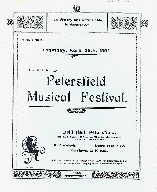 |
|
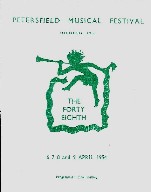 |
|
“Carriages at
10 p.m.” advises the front of the
programme for the Fourth Petersfield
Musical Festival, which took place over
three days in April one hundred years
ago. The Festival had begun modestly just
three years earlier, the brainchild of
Edith and Rosalind Craig Sellar - the
Misses Craig Sellar, as they were known.
Inspired by a visit to the Kendall
Festival in the Lake District, they were
determined to stage a similar event in
the south of England, and by 1904 it was
well established, attracting twelve adult
choirs and five children’s choirs. |
Also in attendance were
such luminaries as Arthur Somervell, a
distinguished composer and inspector of music to
the Board of Education, and Donald Tovey, a
virtuoso pianist, teacher and author, whilst
Vaughan Williams had been present in 1903.
The first day was taken up with Children’s
Competitions and Concert, from 1.30 until 5.15.
We would call that a marathon today, but the
following days were even longer: cut-throat
competitions all morning and afternoon and a
concert each evening. Here the choirs would join
together in their set pieces, songs like
Festa’s celebrated Down in a flow’ry
vale or Liza Lehmann’s If thou wilt be the
falling dew, and also perform other works with
soloists, under the direction of Somervell or
Tovey. In 1904 they sang Bach’s Sleepers
Wake, Beethoven’s Choral Fantasia and the
Entry of the Guests from Wagner’s
Tannhauser.
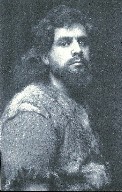 |
|
Most of the
soloists are long forgotten: Mrs A.A.
Montgomery (soprano) and Mr Royston
Cambridge (violin) were regulars in the
early days, and both Miss Gertrude Sichel
and Mr Leonard Borwick have vanished into
the mist of time. But one name stands
out, Mr Walter Hyde.
Hyde was born in 1875 and studied at the
Royal Academy with Gustave Garcia. In
1908 he sang Siegmund in the first
English Ring, conducted by the great Hans
Richter at Covent Garden, where he sang
regularly until 1924. One of the leading
tenors of his time, he featured
prominently in Beecham’s British
National Opera Company, and created the
role of Sali in Delius’s A Village
Romeo and Juliet. |
Fifty years on, and little
had changed, except that the Festival had moved
from the old Drill Hall behind Dragon Street to
the purpose-built Town Hall. Mabel Causton, who
had conducted the Petersfield Choir in 1904, was
still there, now in charge of the Sheet Choir.
Eleven schools took part in the Children’s
Concert, the eleven mixed choirs were still
divided into two classes and an extra day was
added for the thirteen Women’s Choirs. The
competitive spirit still reigned, so there were
no full length choral works such as we enjoy
today. Part of every concert had to be devoted to
pieces like Oyez! Has any found a lad?
by Thomas Tomkins, or There were three jolly
Welshmen, by Geoffrey Sampson. The Division
Two Choirs sang Bach’s Ascension Oratorio
and Vaughan Williams’s Hundredth Psalm,
whilst Sir George Dyson conducted the Division
Three Choirs in his own In honour of the City.
By a strange coincidence, Beethoven’s Choral
Fantasia featured once again.
On the
Ladies’ Night a great favourite made
her last appearance at the Festival. For
twenty-five years Isobel Baillie had been
one of England’s most sought-after
sopranos, her silvery voice adding an
angelic purity to everything she sang.
She first appeared in the Festival of
1932 and there must be many still alive,
and possibly some still singing, who have
vivid memories of her. On this occasion
took part in Cedric Thorpe-Davie’s
Cantata By the River. Other soloists
during the week were Wilfred Brown and
Julian Smith, both of whom graced the
Festival for many years, and the
distinguished pianist Maria Donska. The
Orchestra was led by Kenneth Skeaping,
who first played in the Festival
Orchestra in 1922 under Sir Adrian Boult.
|
|
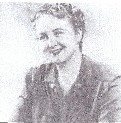 |
The soloist at the
Children’s Concert was a young guitarist
called Julian Bream, then aged twenty, and
already an established soloist. He went on to be
one of the world’s leading virtuosi, and
returned to give a memorable solo recital at the
Festival of 1998, forty-five years after his
first appearance here.
Things change
slowly in Petersfield, but today’s
Festival is very different from those I
have described. Competitions died out
during the 1970s, so more full-length
works could be performed.
Monteverdi’s Vespers or Elgar’s
The Kingdom would never have been dreamt
of fifty years ago, let alone
Tippett’s A Child of Our Time.
We may not be able to afford established
soloists like Elsie Morrison, Jennifer
Vyvyan or Nancy Evans nowadays, but many
distinguished young singers have appeared
in Petersfield at the outset of their
careers: Lesley Garrett, Mark Padmore,
John-Mark Ainsley and Gerald Finley, all
now international stars, and more
recently, the shining young soprano,
Carolyn Sampson. |
|
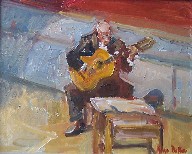 |
Tom Muckley, February 2004
This article was originally
published by the
Petersfield Post
tommuckley.co.uk
|
|






